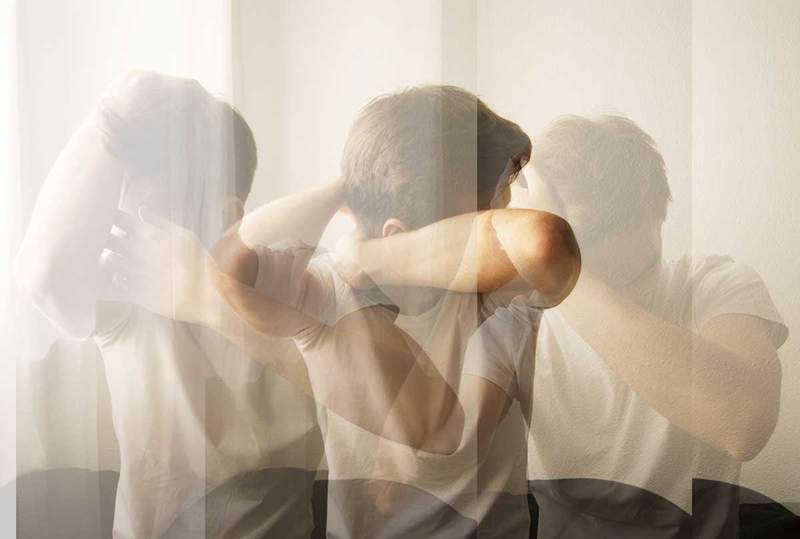Residual schizophrenia, what is it?

- 762
- 243
- Charles Fay
Residual schizophrenia is characterized by being A picture in which the affected person does not have positive symptoms when evaluated, But he has lived episodes of the disease.
Most of the episodes that take place in the residual schizophrenia picture are the negative ones, which include attention disorders, alogy, abulia, social isolation, among others.
The person with residual schizophrenia can present symptoms that are not as striking, as the commonly extravagant; In this manifestation of schizophrenia, symptoms can become more acute, or can constitute a transition.
Content
Toggle- What is residual schizophrenia?
- Symptomatology of schizophrenia
- What is the treatment for residual schizophrenia?
- Bibliography:
What is residual schizophrenia?
Residual schizophrenia It is defined as a mental disorder in which negative symptoms predominate.
Schizophrenia, in general, is a mental disorder whose evolution is chronic and can occur in the form of outbreaks, or acute episodes, or through interepisodic periods.
It is considered that the etiology of schizophrenia is multifactorial, that is, among its causes those that are genetic, as well as of environmental origin can be found.
Regarding its prevalence, The manifestation of this disorder represents 1% of the world population and it is usually characterized because it presents two symptomatologies.
Symptomatology of schizophrenia
Schizophrenia has two symptomatologies or categories, one with positive symptoms and another with negative symptoms.
Among the positive symptoms are hallucinations, delusions, disorganized and extravagant behavior, language and form of language alterations.
Among the negative symptoms, affective dullness, the poverty of discourse or conversation stands out, Apathy, Abulia, Anhedonia, the deterioration of socio-labor performance, incongruous affection, social withdrawal and carelessness of personal toilet.
According to David Fraguas, in his study on the semiology of schizophrenia, residual schizophrenia describes a picture in which negative symptomatology is what predominates, with a chronic evolution and presence of positive, but attenuated and non -dominant symptoms, preceded months or years, after one or more periods with positive symptoms.
So, to establish the diagnosis of residual schizophrenia, the following criteria must be followed:
- Positive symptoms, in case of presenting, do so attenuated, through uncommon beliefs, or uncommon perceptual experiences, with absence of hallucinations, delusional ideas or catatonic behavior.
- Negative symptomatology should be continuous.
- Apathy, or inability to start activities. The feeling of vacuum can be present.
In addition, it should be considered that residual schizophrenia can be manifested for a period that can be transition towards total remission, despite the fact that the manifestation of it can be persistent for years, even without acute episodes occurring.
 Capgras syndrome and Cotard syndrome, two strange disorders
Capgras syndrome and Cotard syndrome, two strange disorders What is the treatment for residual schizophrenia?
Being schizophrenia a complex psychiatric disorder, characterized by the distortions of thought, perception itself and external reality, Treatments usually have a long duration and may include antipsychotic drugs, antidepressants and anxiolytics.
However, the presence of schizophrenia often also requires a multidisciplinary approach in which several medical or health areas converge, such as psychology, psychiatry, social assistance, among others.
Once the symptoms have been achieved, through drug administration, this treatment can be combined with a psychological one in order to have a good evolution.
In residual schizophrenia, Psychological accompaniment will not be focused on treating hallucination or delusions symptoms, since these should not be actively manifested, but will be oriented towards negative symptoms, especially if alogy, affective flattening or apathy.
Generally, the patient is provided with information regarding the disease and treatment so that it has a good adaptation.
In addition, the patient is accompanied with an individual therapy that helps him identify the symptoms and approach them strategically, thereby avoiding relapse.
It is also important the therapy that is provided to the family, since, Negative symptomatology, typical of residual schizophrenia, can affect family relationships.
In addition to the above, the patient, through cognitive-behavioral therapy, receives techniques that allow him to deploy the social skills required by the environment and thus reduce the expressions of indifference or avoidative behaviors.
Finally, the patient receives support to maintain their daily activities and prevent the disease from causing deterioration in the basic tasks of his life.
Catatonic schizophrenia, what is it about?
Bibliography:
- Alves, Cândida & Berberian, Arthur. (2020). Cognitive -portal therapy for schizophrenia.
- Donnoli, Vicente & Persano, Humberto & Díaz, Nilda & Correa, Jorge & Climent, María & Syriani, Anis & Pasi, Odell. (1991). Psychotherapy by art in schizophrenia. II. 13-16.
- Fraguas, David & Antonio, Juan & Castaño, Palacios. (2009). Semiology reminder of schizophrenia. Janus. 31-36.
- Luzia, Priscila & Nunes, Pereira & Ceranto, Daniela de Cassia. (2020). Chapter 508 Schizophrenia subtypes. 10.34119/BJHRV3N5-024.
- « The love that begs is not love 10 signs that it is not love
- Increase in suicides in Japan by COVID-19 »

